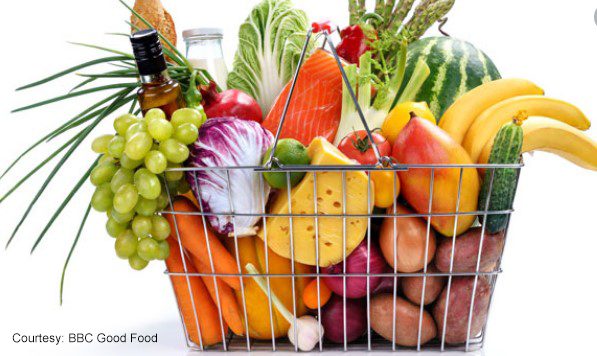Diet: Eat Well to Age Well!
It may seem challenging to keep up with a healthy diet pattern and stay on top of all the evolving dietary guidelines and recommendations, but a balanced diet contributes to good health and helps you age well.
What is ‘Balanced Diet’?
A balanced diet includes food from all five groups that are essential for our nutritional needs. Our body requires multiple vitamins and proteins to function properly, and it is necessary to include these nutrients without exceeding the calorie intake. Consuming too much is as dangerous as consuming too little, which is why several dietary guidelines help us monitor our food intake without going over the recommended calorie count on a daily basis. According to doctors, a balanced diet consists of nutrients from the following five groups, and every balanced plate contains food from each group:
- Vegetables
- Fruits
- Grains
- Grains
- Dairy
As per USDA’s recommendation, every plate should be divided into two halves where one is filled with grains and protein, whereas the other half contains fruits and vegetables. Nutrients found in dairy are among the most important ones and should accompany each meal in one form or the other.
Why a ‘Balanced Diet’
Food holds significant importance in all our lives. We mostly eat food to get the nutrients. We also eat food because we like how it tastes or because it has some sentimental value, regardless of the reason, food is enjoyed at every occasion and festivities worldwide. It is something that connects us all. Some like to experiment with the flavors, while others stick to that recipe for life. However, there are seven factors for a balanced diet, and they are essential. They include:
- Carbs
- Protein
- Fat
- Fiber
- Vitamins
- Mineral
- Water
Having an idea of what a balanced diet allows you to enjoy the food, taste, and stay fit at the same time. It is essential to include these nutrients in our daily intake, especially in younger years, because whatever you feed your body will be reflected as you grow old. Diabetes, high cholesterol, weak bones or muscles, etc. are all signs of a poor diet.
In addition to this, proper nutrition allows the body to fight toxins that may cause illness and boosts the immune system. It keeps body weight in check, which can help reduce the risk of a stroke, high blood pressure, and muscle weakness to enjoy the same freedom and independence as you age.
For instance, people who eat leafy vegetables, fruits, and fish are at a lower risk of Alzheimer’s disease because omega-3 fatty acids help improve focus on mental alertness as you grow old. Wholesome meals and a proper diet also contribute to more energy resulting in a better figure, self-esteem, and more activity. When the body has all the nutrients, it feels good, and as a result, you feel content and happy. A balanced diet is more than just the quality and variety of food you take. It also includes the pleasure of eating, like sharing a meal. When we eat together, we are fueling our bodies with vitamins and minerals and at the same time the atmosphere of togetherness stimulates the brain and makes it more enjoyable.
Balance: How much should I eat?
We all enjoy donuts and French fries, while eating broccoli or leafy green vegetables is not as enjoyable. But, it is not impossible to reprogram our brain and its food cravings to make healthy choices.
As science evolves, the dietary recommendations also change, and alterations are made according to the new findings. A rough calculation of the calorie intake that should come from each food group are as follows:
| Nutrients | Functions and Percentage | Sources |
| Protein | – 10-35%- Energy | Fish, Nuts, Eggs, Meat, Pulses, and Beans |
| Carbs | – 45-55%- Energy | Refined and Unrefined Grains |
| Fat | – 20-35%- Energy and Hormone Production | Milk, Cheese, Plant Oils and Nuts |
| Fiber (counts as carbs) | – Bowel health and blood sugar regulation | Peas, Vegetable, Fruits, Whole Grains and Brown Rice |
| Vitamins | – Metabolism and other biochemical functions | A variety of vegetable, meat, and nuts |
| Water | – Hydration | Water, Beverages, and Food(Food makes up 20% of the water) |
The table above gives a brief overview of what a balanced plate must look like. It is important to keep in mind that some foods are better for us and should be taken five times a week while others count as cheat meals, and the body can do just fine even without them. An example of this is the junk food we eat. Everybody loves coke and fries, but they aren’t going to be beneficial for the body if taken 4-5 times a week. They satisfy the appetite but do not contribute to the nutrition our body needs, so people gain weight and remain malnourished.
A healthy male adult should take about 2500 calories, whereas, for women, 2000 calories is fine considering their built and size. Consuming fewer calories than this will result in weight loss and weakness, whereas taking more calories than this puts you at a higher risk of heart diseases and other health issues.
How we cook our food and the methods we adopt are also important, and they determine the retention of the nutritional value. Roasting and frying are considered unhealthy as compared to grilling and steaming food. Whatever method you choose, balance it, and compensate for the extra calories to be fit and age gracefully.
A balanced diet should become a part of your lifestyle from the start!
References
Hopkins, J. (2020). Healthy Eating During Adolescence. Retrieved from Johns Hopkins Medicine
i-base. (2016, August 1). Diet: a balanced diet and your health. Retrieved from i-base.info.

